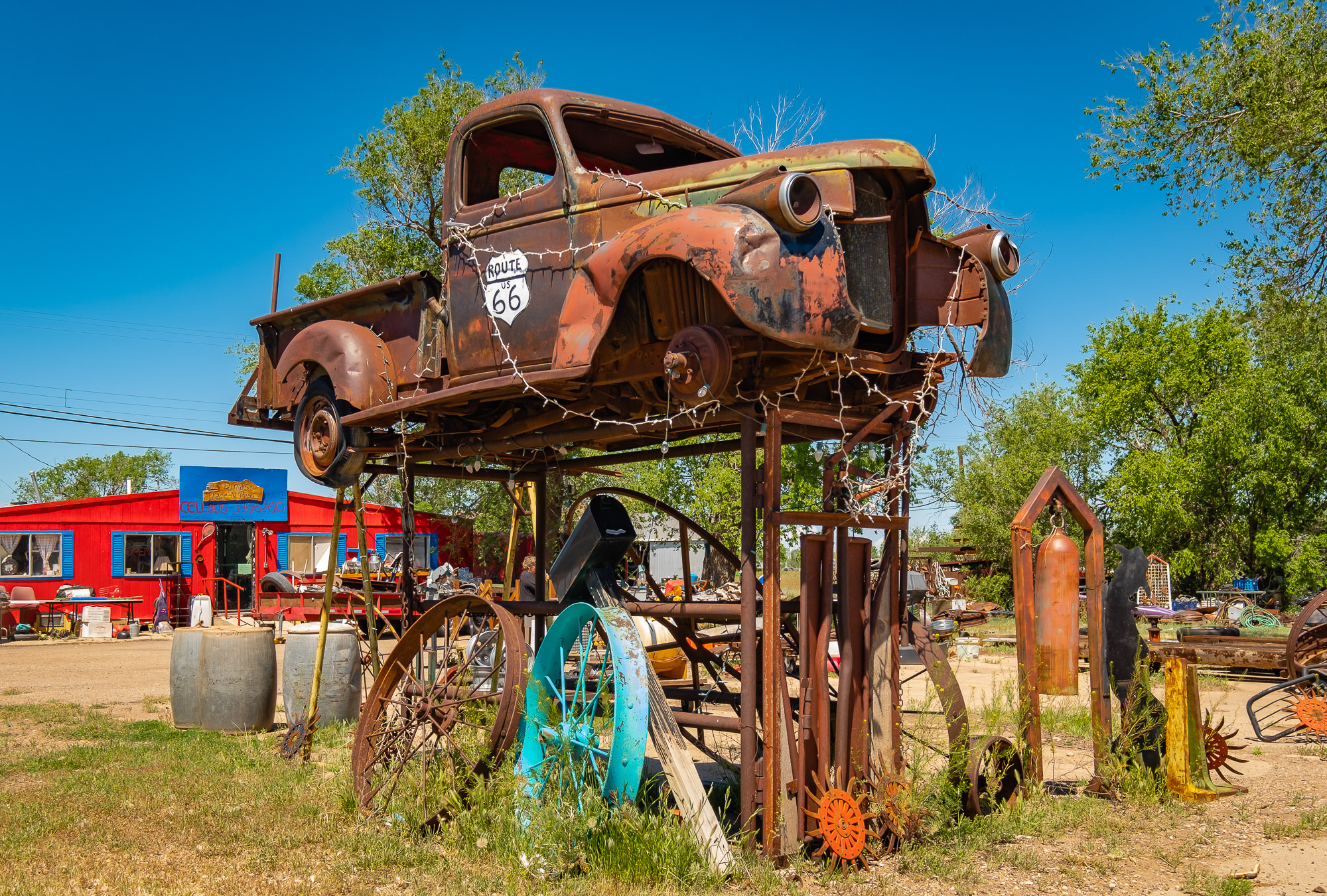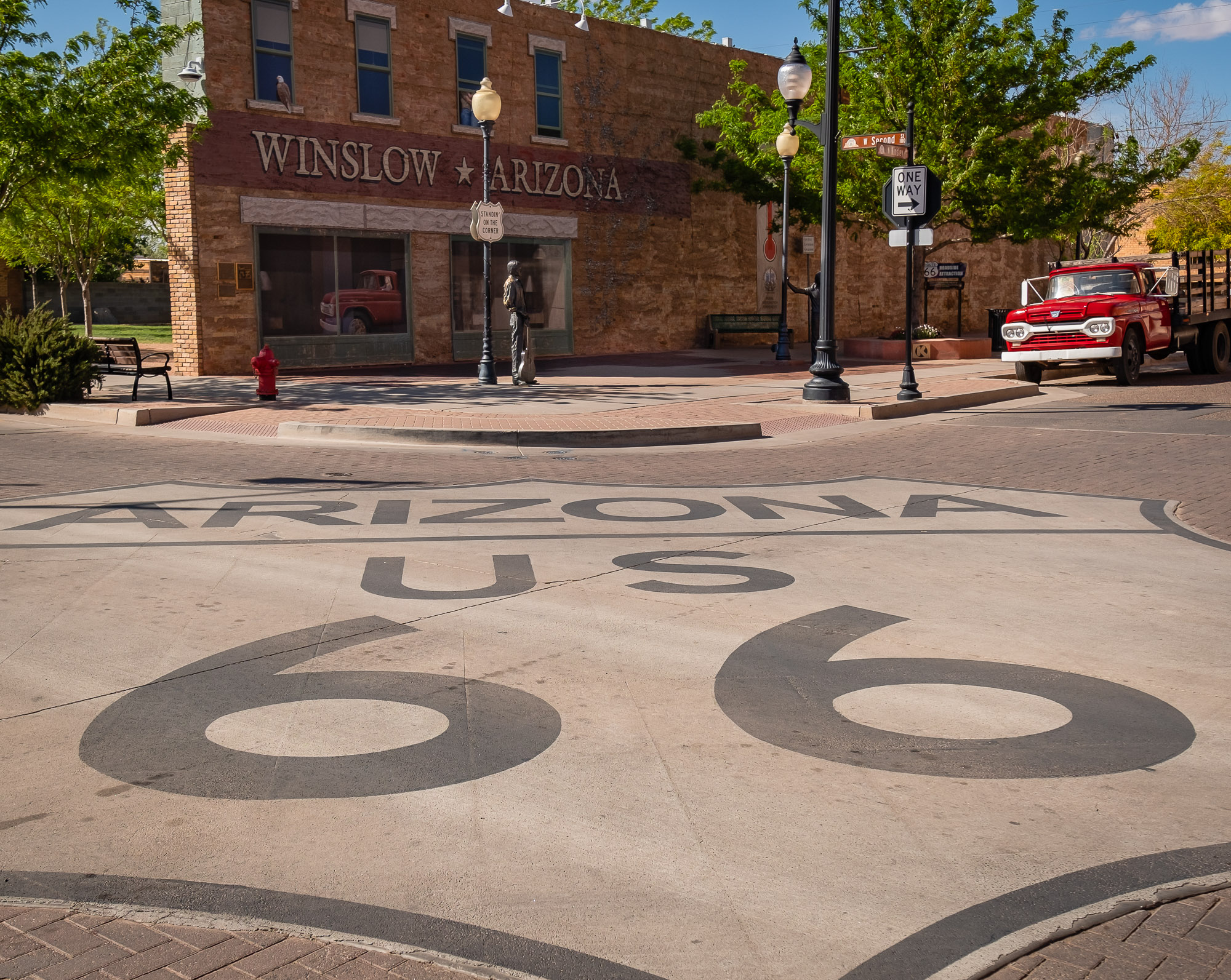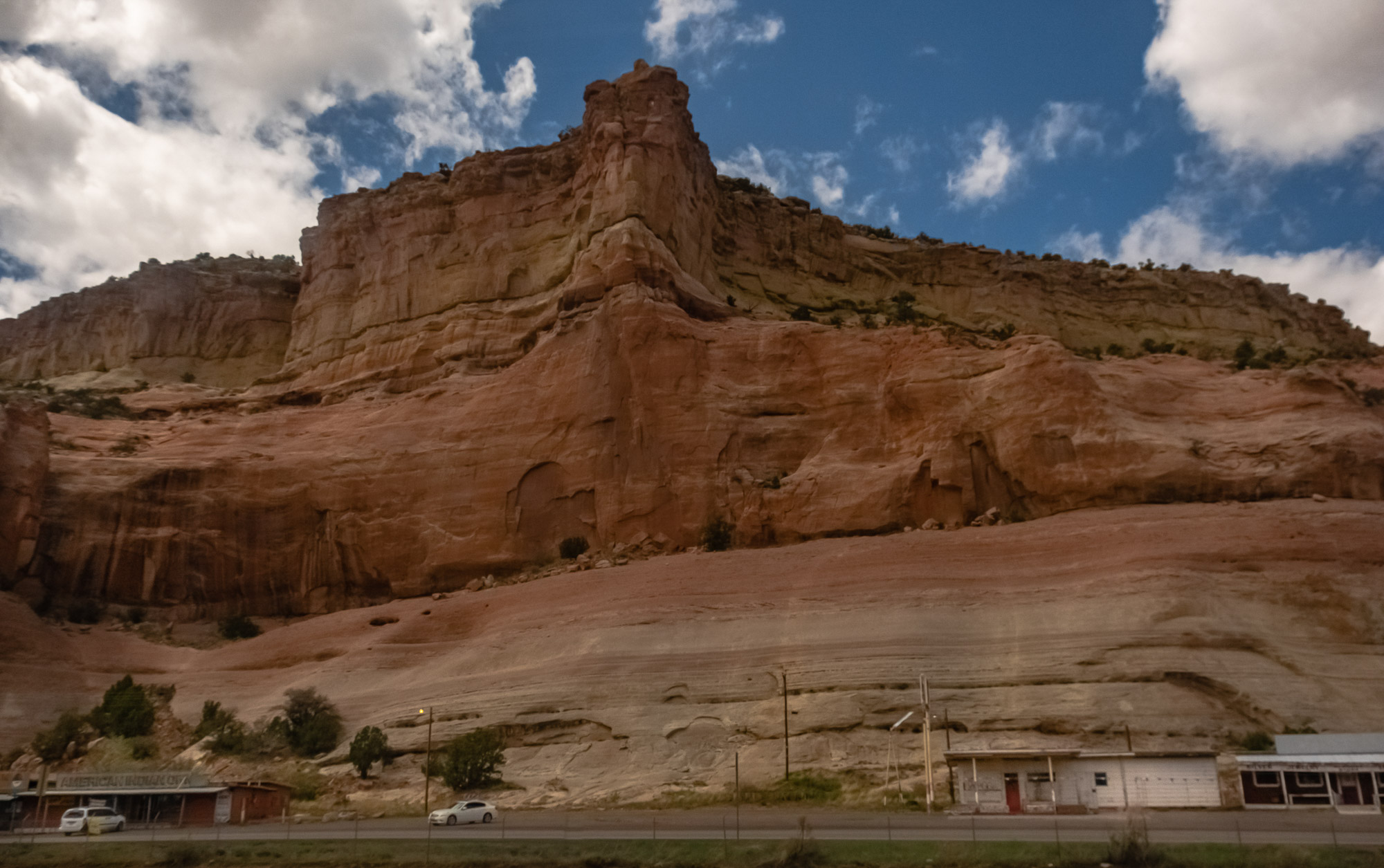HISTORIC ROUTE 66
A RETURN TO AMERICA’S PAST
By Jane Jamison
“Route 66,” “The Mother Road,” “Main Street, USA” — all are common monikers for this highway originally running from Chicago, IL to Santa Monica, CA. It is certainly an important piece of Americana, fond memories, and tourism. Replaced primarily by Interstate 40 in the 1970s-1980s, only parts of it still exist. Other parts are now just forest and dirt trails.
Having traveled the original highway from Texas to California in 1962, I enjoyed reliving that and seeing changes on my trip in Spring 2019 with PWA. The lore of this iconic highway still draws tourists from both the United States and the rest of the world. In fact, while “on the road,” we met fellow travelers from Poland, Australia, and other spots. PWA’s “Historic Route 66” adventure begins in Amarillo, TX and travels to the “End of the Trail” in Santa Monica, CA.
Vintage Vehicles
Of course, the real draw of such an adventure is the opportunity to see an abundance of vintage vehicles in various stages of decay or restoration. We began with the Cadillac Ranch and RV Park just outside Amarillo, capturing three Cadillacs on sloping platforms with Willie Nelson, John Wayne, and Elvis driving. Using cans of spray paint purchased at the souvenir shop, we stopped at their interactive painting site using old Cadillacs standing upright as canvases.
Some vintage cars (and other memorabilia) were preserved as shiny, pristine restorations at the Classic Car and Memorabilia Museum (part of Russel’s Travel Center and Truck Stop). Most, though, had not been restored and were just parked in displays like the ones at the Mother Road Memory Iron outside Tucumcari, NM. They were intriguing simply because of their age and rust.
All of these vehicles offered wonderful opportunities for somewhat abstract, detailed images of pieces and parts of trucks and automobiles. Whether the shiny reflections in restored, polished cars or the patterns of rust and parts no longer in use, we enjoyed capturing bits and pieces of an era that is rapidly fading. Often we wondered just what the part was and how it was used.
Other fascinating vehicles advertised a business or were linked to a popular “hook” or tourist attraction. In the small town of Vega, TX the local “Trade N Post” used an old truck as advertising and a marketing tool. One customer found success with purchasing several items on that morning and stopped to show us his treasures.
In Segilman, AZ, an old police car attracted me because my father was a city policeman. But Segilman is most famous as the site of the race in the movie “Cars.” It’s also near the site of a major antique car show in Kingman, and we enjoyed meeting the owner of a pristine antique car while we were eating lunch from the Snow Cap café/diner at their outside picnic tables. When I asked him to allow a photo, he turned the tables and had me get into his car while he took my photo (and proved his photography skills).
Memorabilia
“Trade N Posts,” junkyards, or museums—whatever the name—were gold mines for photography as well as visiting with locals. The best, by far, was the Embudo Classical Gasoline Museum, located outside Santa Fe, NM. The ex-military owner displays a large collection of lighted and neon gasoline signs indoors.
He also had a huge collection of memorabilia attractively displayed on the large grounds of the museum. He claimed that his seemingly lonely business was “the best job in the world” and was working on an old Thunderbird while we were there. When asked if anyone ever stole anything, he acknowledged that they probably had, but added, “Just as often, I come in to find someone left something for me to add to the collection.” And his collection was artfully presented, not just junk piled without regard to themes.
Cities, Small Towns, and Ghost Towns
Along the route, we visited beautiful large cities such as Santa Fe, NM, and Riverside, CA; quaint towns such as Tucumcari and Winslow; and deserted ghost towns such as Richfield, Two Guns, and Twin Arrows. While many are just decaying and some struggle to survive, all had great opportunities to offer photographers.
It seemed that those with a “hook” for tourists are having the most success. Williams, AZ boasts that it was the last town by-passed by I40 in 1984. Midway’s claim to fame is that it is the actual midpoint between Chicago and Santa Monica. Its other unique feature is its red, bent door.
Of course, Winslow, AZ has garnered tourist traffic because of its mention in the Eagles’ song “Take It Easy.” That one line has resulted in, if not thriving, at least successful tourist traffic. The statues permanently “standing on the corner” are tourist targets for photos.
Art
From the renowned art mecca of Santa Fe, to the virtual ghost towns along the route, art and artists document their impressions of the human condition. Sometimes it would be one artist like Horn Feather, who creates jewelry out of deer, elk, and buffalo horns in isolated “Cool Springs” in the pass through the San Gabriel Mountains. He even offers free lessons to young people in the area.
At other times, it would be tourists themselves who create make-shift memorials or graffiti worthy of photographers’ attention. These are living testaments to tourist traffic and art that is still vibrant and continually changing. Maybe the most creative of the art that we saw, though, was the “Bottle Tree Ranch” outside Barstow, CA. A collector has created a massive display of bottle trees and memorabilia for tourists to visit and photograph with no entrance fee.
Lodging and Diners
In keeping with the attempt to connect to the “Mother Road”, businesses have tried to maintain the feel of the earlier glory years of Route 66. Small diners were usually crowded and offered lots of burgers, milkshakes, and Southwestern fare amid décor reminiscent of the 1950s. One restroom even had a life-sized poster of Elvis in the ladies’ room; I understand that the men’s room had one of Marilyn Monroe.
Lodging, though, was more diverse. One lovely highlight and treat was our stay in Tucumcari at the iconic Blue Swallow Motel, run by a retired couple who had moved from the upper Midwest to restore the motel and graciously accommodate photographers. The owners even provided vintage cars to set our scene and had painted “Cars” characters on the walls of the garages next to the rooms.
Other larger properties were the Mission Inn in Riverside, CA (one of the nation’s premier historic hotels) and the Viceroy in Santa Monica. Typical of every PWA adventure, all properties on this adventure were comfortable, friendly, and modern in their connectivity.
Landscape
While much has changed along the western portion of Route 66, one thing has not. The land formations as we drove either on the original Route 66 or the more current I40 were awe-inspiring. From the “flat land” of Texas and eastern New Mexico, to the buttes and plateaus of Arizona to the mountains of California, the scenery encouraged us to shoot from the SUV or to stop and shoot from the side of the road.
Along the way we saw many extremely long freight trains, which remain the life-blood of commerce in delivering goods throughout this vast country. Sometimes there was traffic; more often, we had the road to ourselves. When we reached the “end of the trail” at Santa Monica, traffic certainly intensified and the landscape turned to the beach and pier—a fitting ending to our journey through part of America’s past.






















